The God in all things - Yorkshire museum celebrates Islamic and Arabesque art
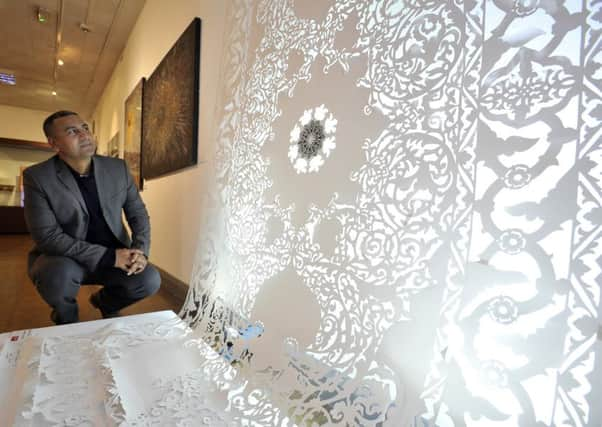

So says Mobeen Butt, curator of a brand new exhibition at Craven Museum and Gallery in Skipton, which is showcasing the work of 10 of the most exciting contemporary British Muslim artists working in the UK today.
The Faith in Art exhibition, run in collaboration with the Muslim Museum Initiative founded by Mr Butt, runs until March 28.
Advertisement
Hide AdAdvertisement
Hide AdThe relationship between art and faith is nothing new, of course, and art is a huge part of Christian tradition through the ages, as well as Islam and other religions.
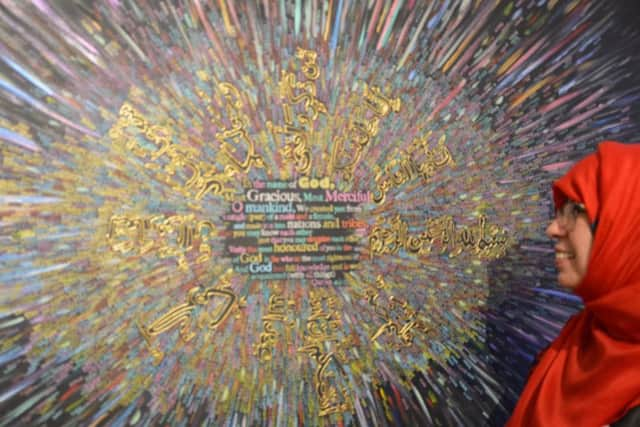

But for Muslim artists, the additional challenges of a prohibition on iconography - images of religious figures particularly - as well as the political dynamics of the British Muslim identity in the modern world, add a unique dimension to their work, and make direct links to the scriptures even more significant.
Pieces currently on display in Skipton include stunning examples of calligraphy, geometry, arabesque, illumination, miniature painting, wood crafting, paper-cutting, embroidery and 3D.
The works are inspired by verses from the Quran, Islamic folklore and epic poems, Arab influences, ancient Chinese art forms, the hugely diverse cultures of the Muslim world, science, mathematics, geometry, and even classic English literature like The Lord of the Rings.
Advertisement
Hide AdAdvertisement
Hide AdAmong the exhibitors taking a big leap of faith to showcase their work in Yorkshire is Maryam Golubeva, who is originally from Russia but has been living in the UK for the last 10 years.
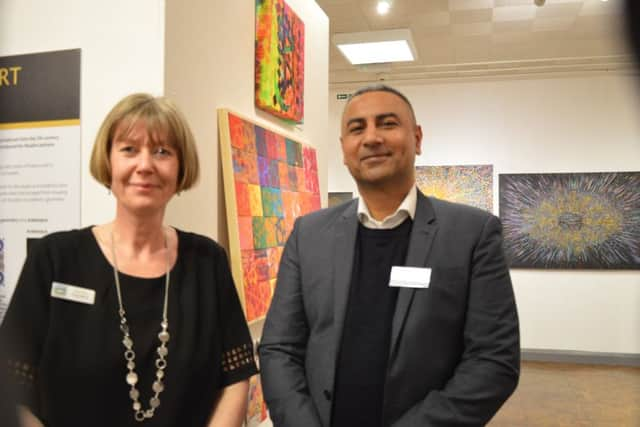

She has combined her love of the ancient Chinese art of paper cutting with her own “spiritual path” to create visually stunning pieces.
She explains that she finds creating her ornate patterns of foliage and flowers “very meditative.”
Another exhibitor, Raanaz Shahid, draws on the order and chaos of the modern world to create mixed-media pieces using textiles, hand dyeing, glass, semi precious stones, gemstones and even paint which she has hand mixed with 24 carat gold.
Advertisement
Hide AdAdvertisement
Hide AdShe is inspired by her travels to Spain - one of the ancient colonial centres of Islam - and Morocco, and driven by a desire to redress the balance of pervasive notions of the Muslim identity - and her own lived experience of it.
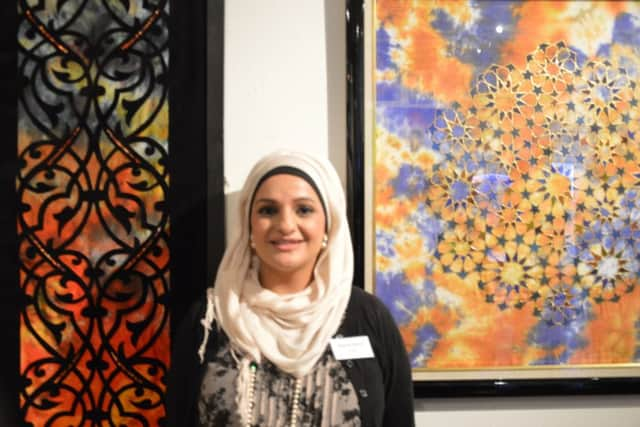

“There’s a natural relationship between faith and art,” she says.
“You cannot control negative messages, but art is a great way of reminding people that it’s not always how it seems.”
Ghulam Farid Rafiq, from Halifax, specialises in calligraphy pieces inspired by the Burdah poems, traditional Islamic epic poetry in praise of the Prophet Mohammed.
Advertisement
Hide AdAdvertisement
Hide AdThe first Burdah - the word translates literally as ‘mantle’ - was written by a companion of the prophet after Mohammed gifted him with a cloak.
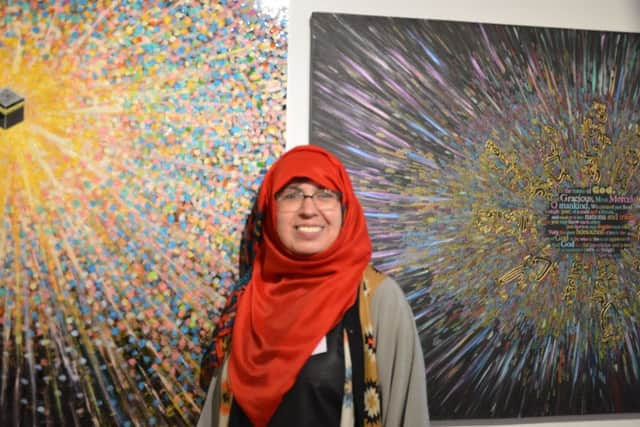

Explains Mr Rafiq: “The Burdah is famous all over the world and each Islamic country sings it in its own style.
“It stretches from Morocco to the Far East, Indonesia and Malaysia.
“For these pieces, I chose the first chapter of 10, which talks about love, and the pre-Islamic tradition of remembering departed loved ones through poetry.”
Advertisement
Hide AdAdvertisement
Hide AdThe idea of love – human, universal and devotional – is something that runs through many of the works in the Faith in Art exhibition.
It is also reminiscent of many elements of English and Western classical literature and arts, highlighting the eternally symbiotic relationship between East and West.
One very powerful piece is ‘Equal’ by Saddiqa Juma, which shows a ‘big bang’ or supernova type scene, with a universally relevant verse from the Quran – “O mankind, We have made you peoples and tribes that you may know one another” – at the centre exploding into thousands of smaller verses in praise of God.
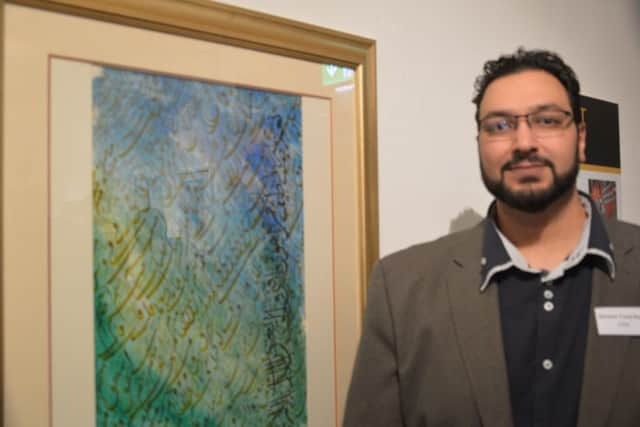

“This verse from the Quran tells us that your importance is what you are as a human being, rather than whether you are a Christian, Muslim or Jew,” the artist, a mum of four, explains.
Advertisement
Hide AdAdvertisement
Hide Ad“Because faith to me is central to everything, a lot of my art has a central point and everything else comes out of it.”
Ms Juma, like many of the artists exhibiting in Skipton, draws her inspirations not just from her faith and Muslim identity, but also her cultural heritage. Her ancestors were from East Africa via Gujarat in India.
Others in the exhibition have historic links to a range of world cultures, countries and former colonies, influences which underly much of their output.
But what unites them is a uniquely British perspective. It could be said they represent an ideal of the apparently elusive British Islamic identity that has been much in discussion in recent weeks.
Advertisement
Hide AdAdvertisement
Hide AdFor Londoner Samir Malik, the creative power of spirituality in all its forms transcends religious and national boundaries and dogma.
He specialises in traditional Arabic calligraphy, often interpreting popular motifs and Western cultural icons – like lines from The Lord of the Rings – through an “Islamic” and “Arabesque” lens.
Part of his mission is to reclaim the “deeply spiritual” Arabic language from what he feels is a growing mundanity and ubiquity, be that through mass-produced wall hangings in British Muslim homes or the “nonchalance” as he calls it of many native Arabic speakers about their “fascinating” linguistic heritage.
“The Quran talks about love, peace, mercy, compassion and brotherhood,” he says. “But many of the Arabs seem to have forgotten the spirituality of their language and I want to remind them.”
Advertisement
Hide AdAdvertisement
Hide AdMr Malik’s own creative journey has taken him across the globe.
He abandoned a career in medicine to study art in Munich before moving to Damascus in Syria to study Arabic calligraphy at the city’s renowned university.
“I went on a Buddhist pilgrimage in India and played cricket with the monks,” he explains.
“I went to Jerusalem to learn Hebrew. I went to Mecca and next year I am going to Santiago, the Christian pilgrimage to Spain.
Advertisement
Hide AdAdvertisement
Hide Ad“For me, it’s not about being a Muslim, it’s all about being a human being in the world, being part of God’s creation.”
As well as the exhibition, Craven Museum has been holding a linked series of workshops in calligraphy and other art forms.
For the man behind the project, the act of bringing the collection together is clearly as much a labour of spiritual love as the individual artistic journeys he is celebrating.
“Muslims in Britain are producing exceptional art with real soul, depth and meaning; art that mesmerises; and art that is increasingly being collected around the world,” Mr Butt says.
Advertisement
Hide AdAdvertisement
Hide Ad“Synonymous with Islam, and, I believe, the religion’s real strength, this exhibition will show that there can be ‘unity within diversity’ and ‘diversity within unity’.”
Faith in Art runs to March 28. www.cravenmuseum. org.